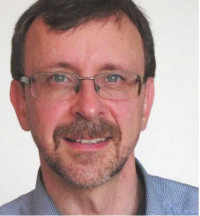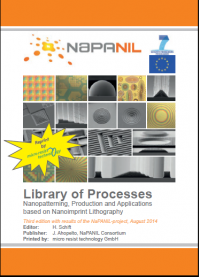Schift Helmut
Helmut Schift
- Diploma in electrical engineering, University of Karlsruhe, Germany, now Karlsruhe Institute of Technology KIT (work performed at ENSPS Strasbourg, France, now Télécom Physique Strasbourg, on computer generated holograms)
- PhD thesis in mechanical engineering, University of Karlsruhe, Germany (work performed at Institute of Microtechnology Mainz ICT-IMM, on micro-optics and LIGA-technology)
- Since 1994 as a staff researcher in the Laboratory for Micro- and Nanotechnology LMN at the Paul Scherrer Institut PSI in Villigen, Switzerland
- Head of the Polymer Nanotechnology Group INKA-PSI
- Lecturer at the University of Applied Sciences and Arts (FH) Nordwestschweiz, FHNW, Windisch, Switzerland, on “Micro- and Nanotechnology”, and in master courses and summer schools
- Visiting professor (2011) in the Optofluidics group in the Department of Micro- and Nanotechnology (Nanotech) at the Technical University of Denmark DTU in Kongens Lyngby, Denmark.
Research
Main interest: Development of novel methods for topological and chemical surface patterns, in particular using nanoimprint lithography and other molding techniques. Since many years we have contributed via development of technology, tools, and processes, i.e. the full toolbox for replication processes needed for academic research and industrial applications:
- We fabricate stamp originals via high resolution electron beam lithography, and have established methods for the generation of 3D surface topographies by greyscale electron beam lithography combined with selective thermal reflow. Our portfolio of 3D patterning capabilities has recently been enlarged by direct writing laser lithography (two-photon polymerization). We also profit from the sub-10 nm resolution demonstrated by EUV interference lithography at the Swiss Light Source (SLS).
- We fabricate stamps copies and workings stamps, e.g. transparent stamps for UV-assisted nanoimprint or hybrid molds with a functional topography. For this an Ormostamp layer is on top of a metal backbone is used for roll embossing and injection molding.
- We apply ultrathin antisticking layers on silicon and quartz molds, but also test materials with inherent antiadhesive properties. Recently we have been developing solutions for nickel stamps, too. We also develop solutions for chemical surface functionalization.
- We analyze mold filling and replication quality in 3D-nanoimprint and measure demolding forces for different thermoplastic and UV-curable materials. Recently we have developed models for "energy based" thermal reflow.
- We establish imprint-based solutions for different applications and areas such as optics (refractive and diffractive elements, photonics, plasmonics, liquid crystals), biology (templates for cell growth, protein patterning and crystallization), micro- and nanofluidics (for analysis of transport through lipid bilayers) and surface wetting (via modification of hydrophilic and hydrophobic properties).
This toolbox for topological nanopatterning is further enlarged within the framework of the Institute of Polymer Nanotechnology INKA (a "joint venture" between PSI and the University of Applied Sciences and Arts Nordwestschweiz FHNW, headed by P. Magnus Kristiansen) and via collaborations with industry and research partners on national and international level. Within INKA we have gained experience in upscaling of molding processes from thermal imprint of nanogratings to injection molding of prepatterned polymer microcantilevers, by working with research and industrial partners, in student projects and large scale European projects. INKA-FHNW is focused on more industrial processes of polymer technology such as injection molding and roll-to-roll processes, and takes advantage of LMN's unique stamp fabrication capabilities.
List of Publications[1]

